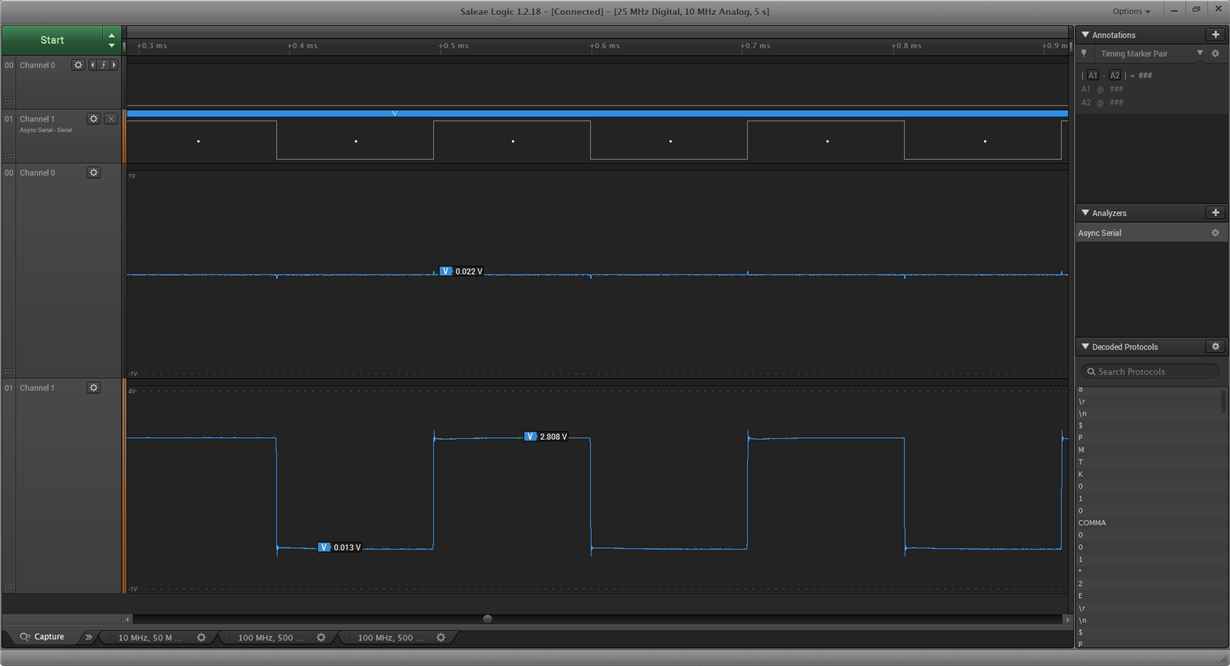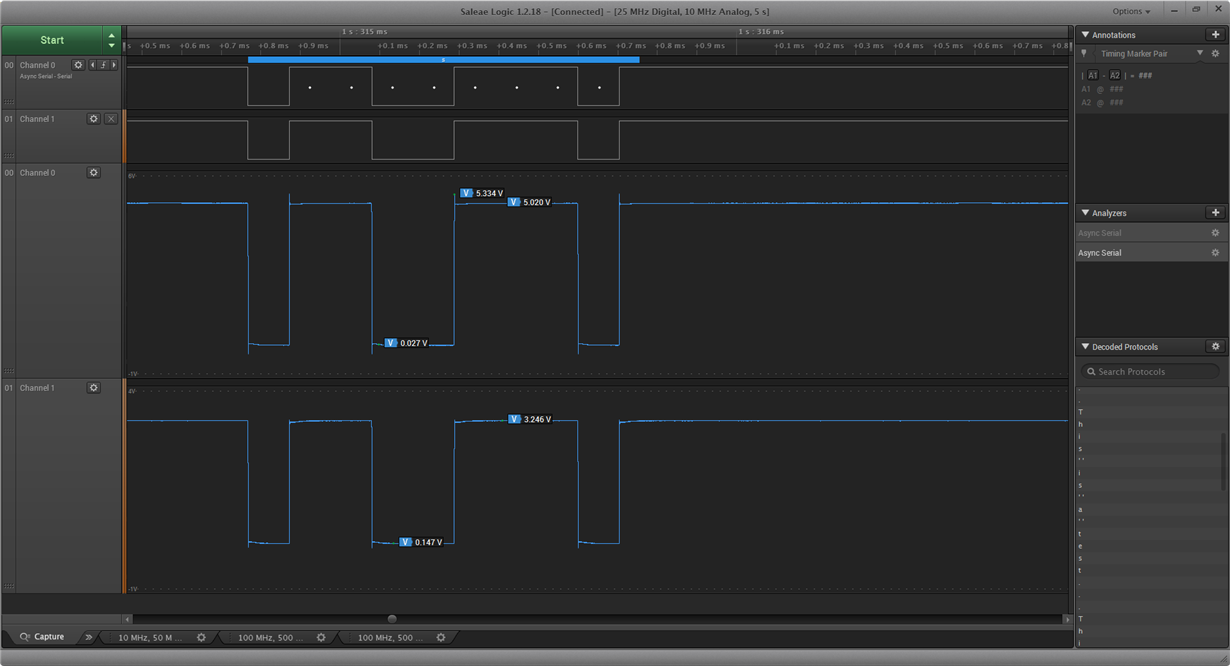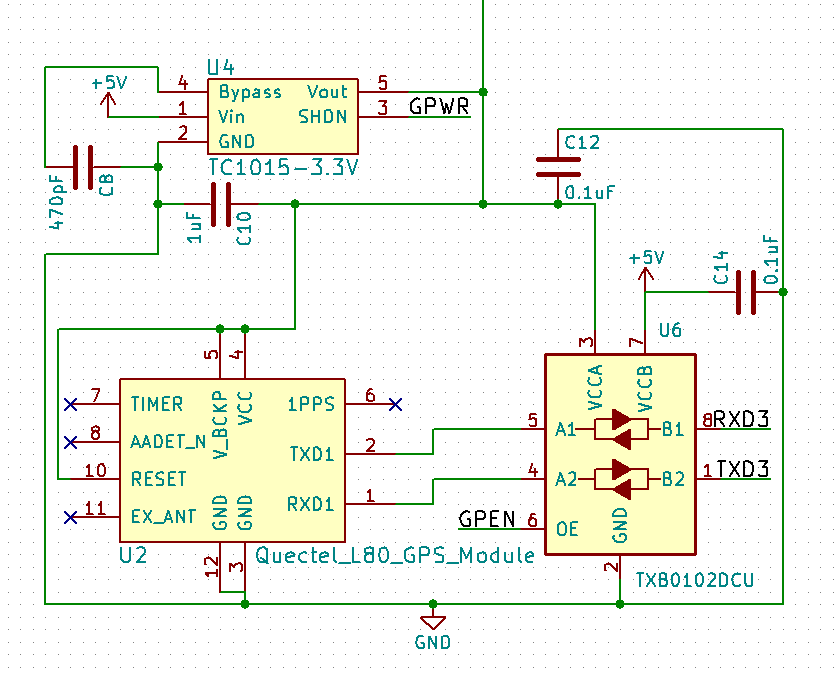Other Parts Discussed in Thread: SN74LVC1G125, SN74AHC1G125, SN74LVC1T45, SN74AXC1T45
First time using the TXB0102 and I can only get it translating in one direction. I'm using it to interface a 5V ATMEGA2560 hardware UART port to a 3.3V device with VOH 2.4-3.1V (TXB0102 table says VCCI x 0.65 so is well within spec) and VIH 2.0-3.6V.
I have VCCA @ 3.3V and VCCB @ 5V with OE controlled by an IO on VCCB and can get data from 5V>3V but not the other direction. Any ideas?




